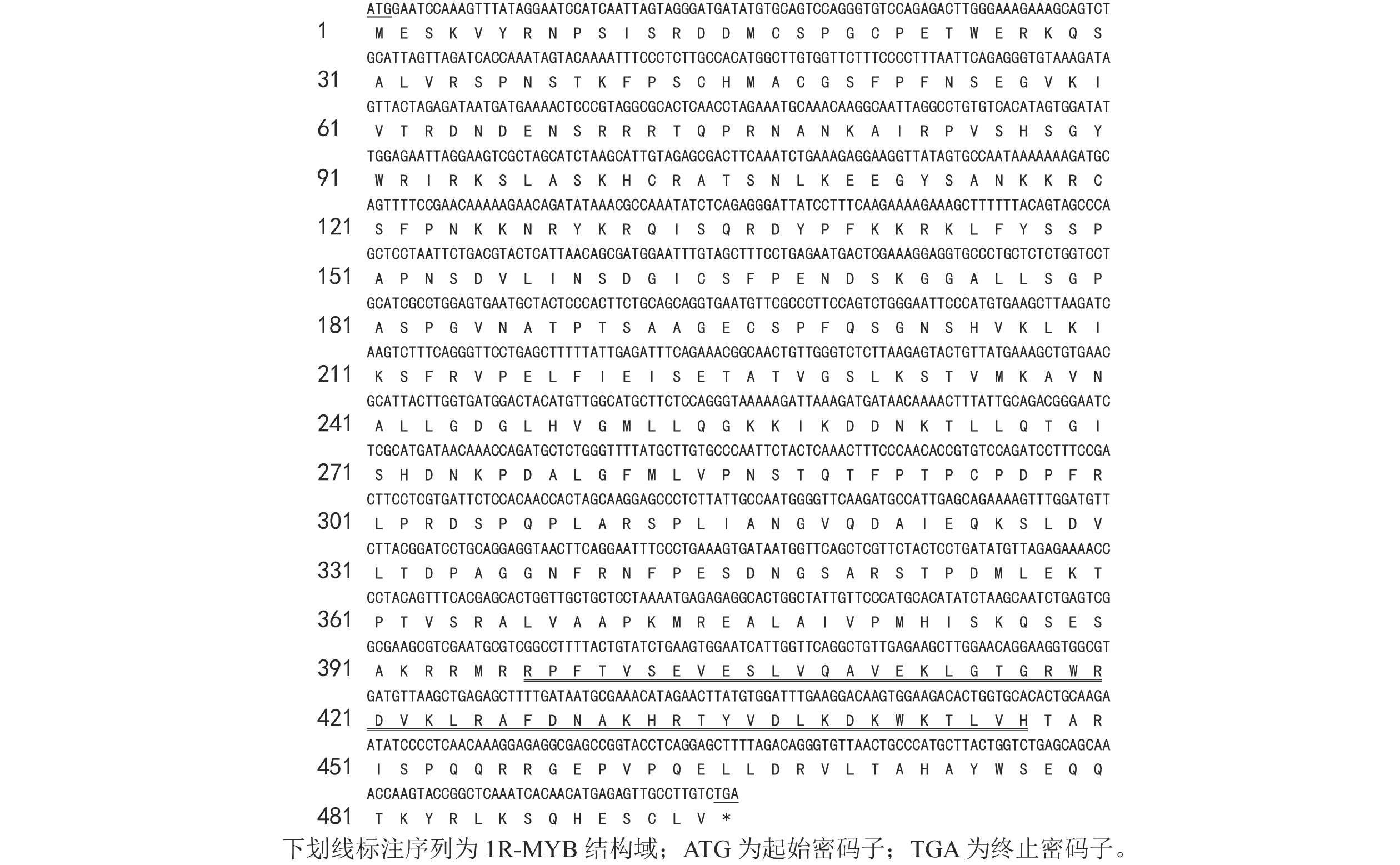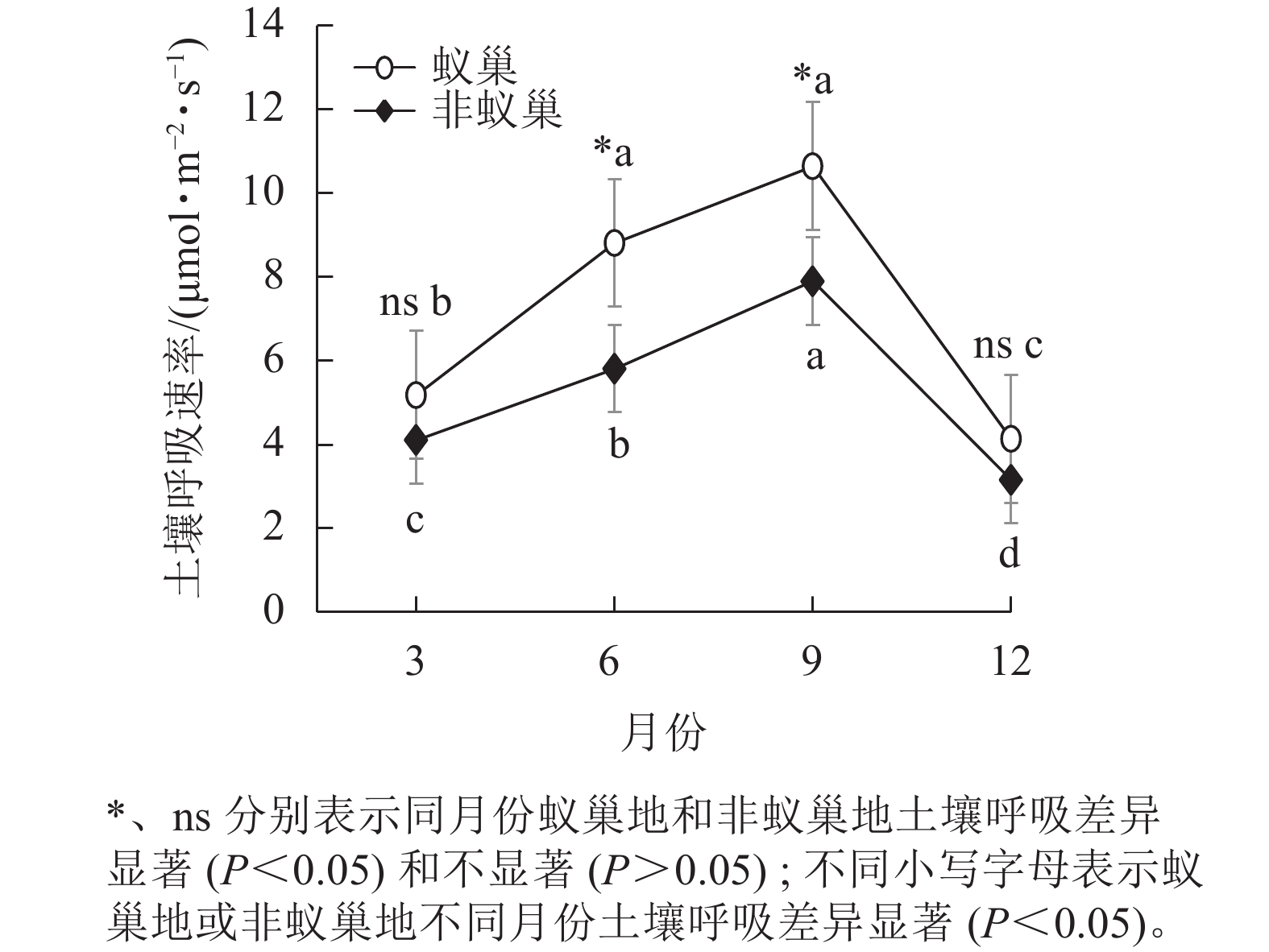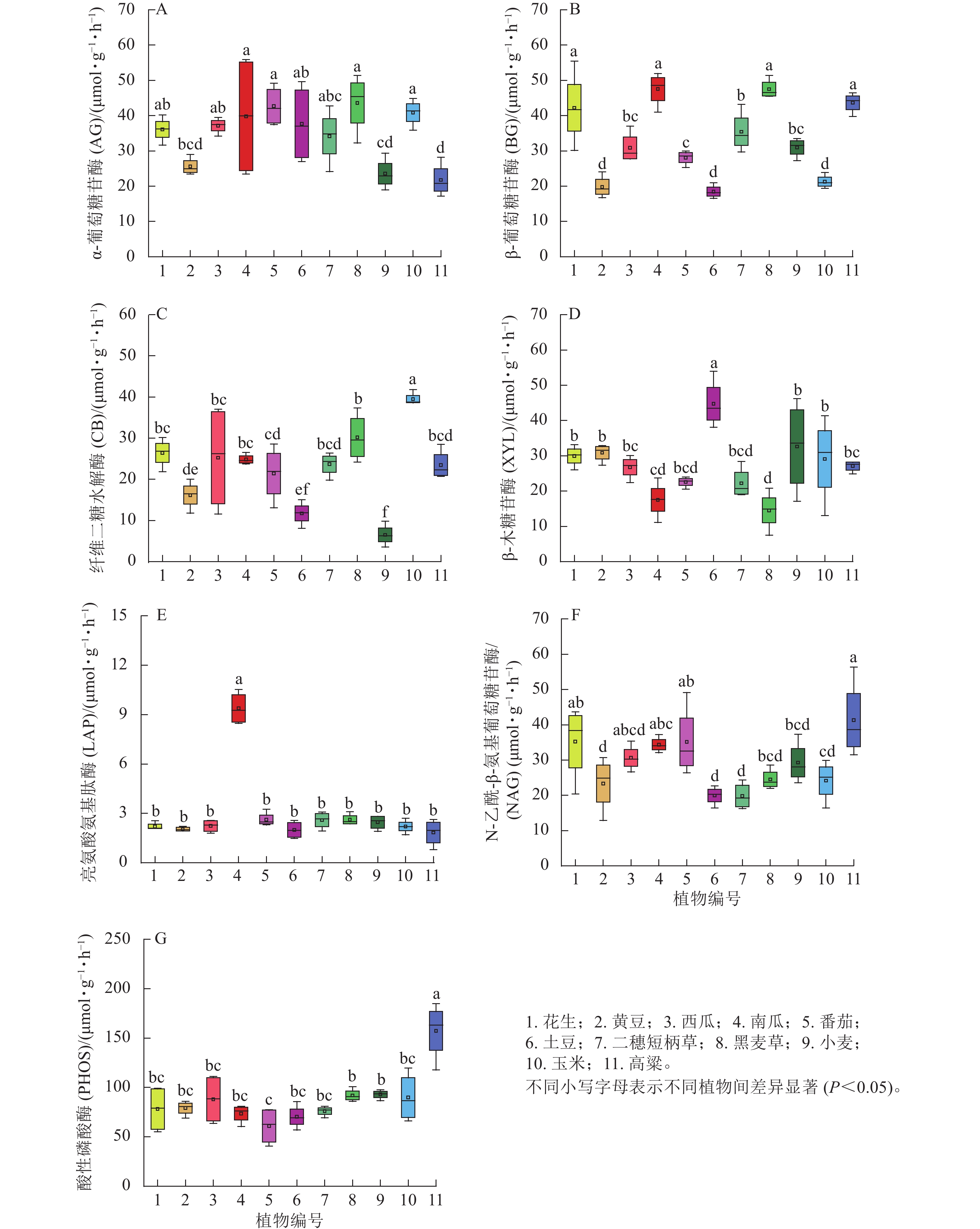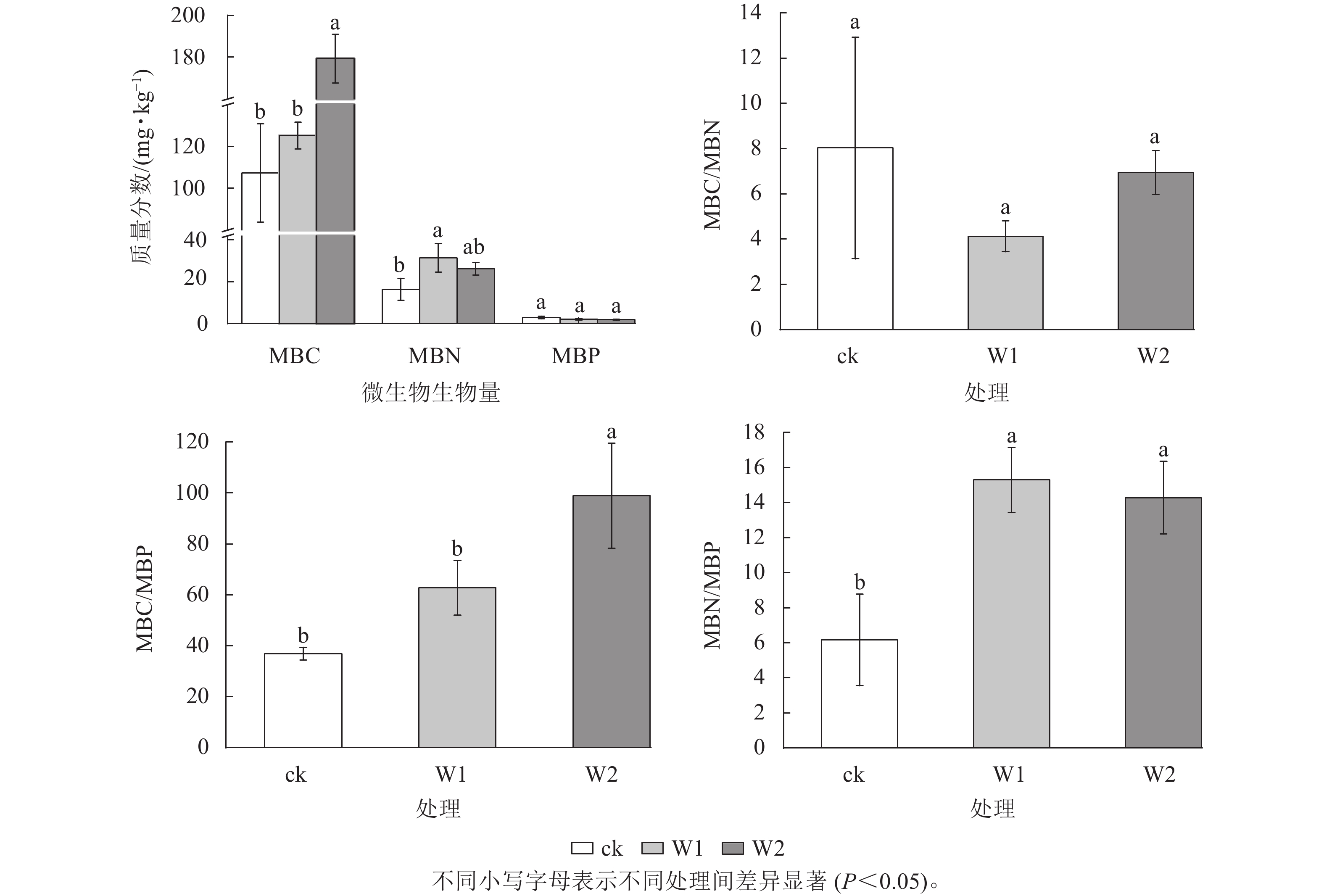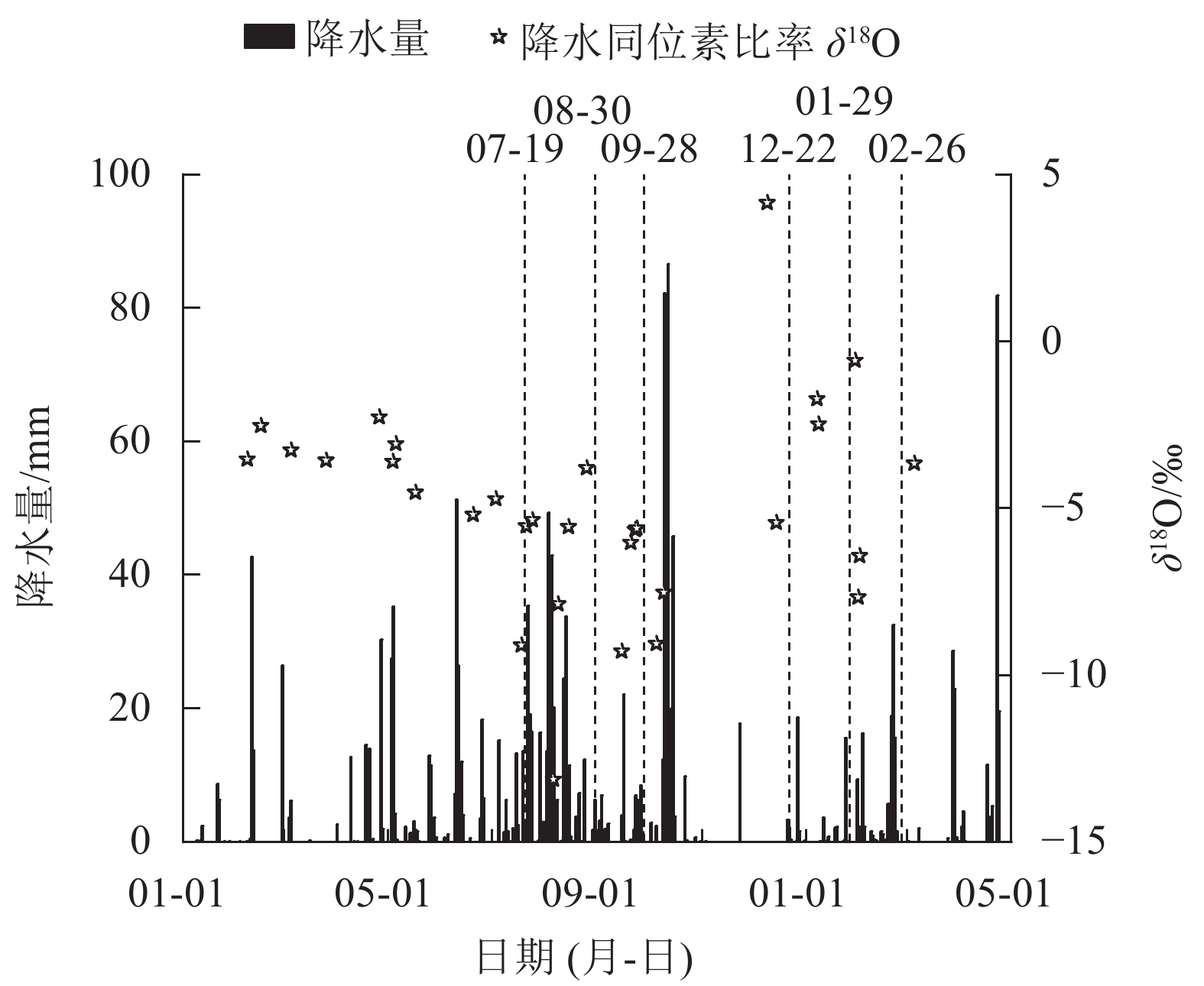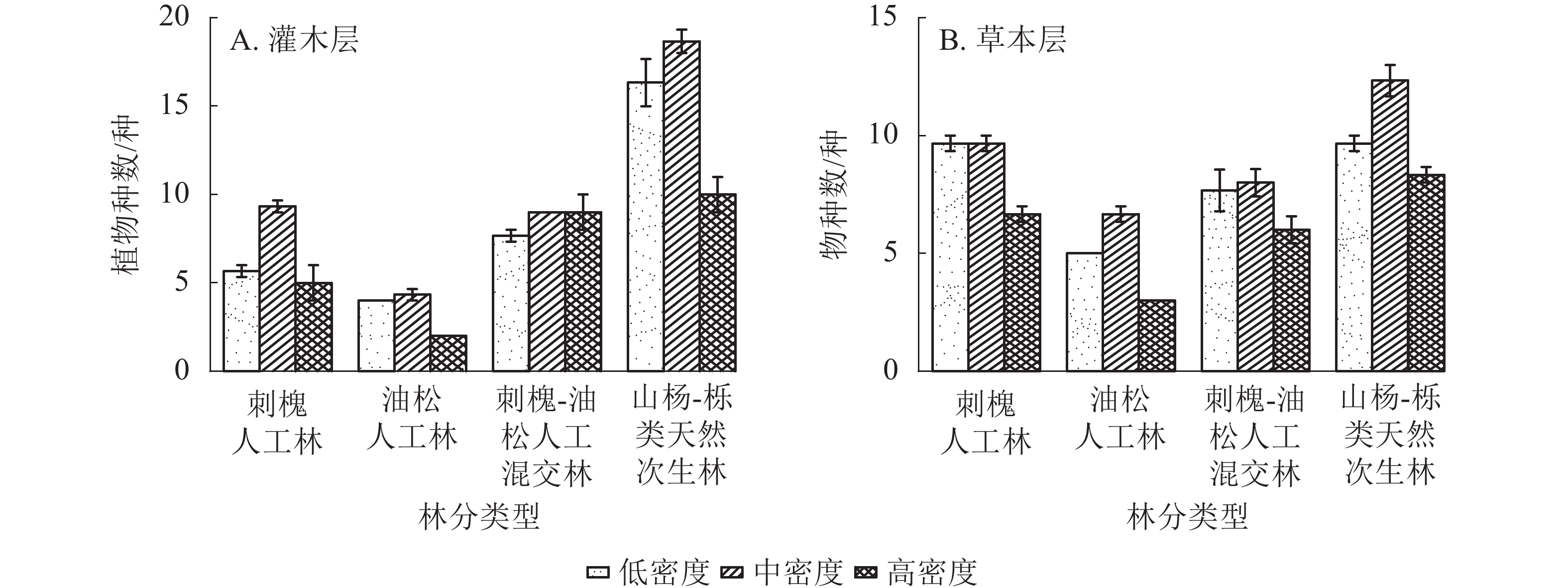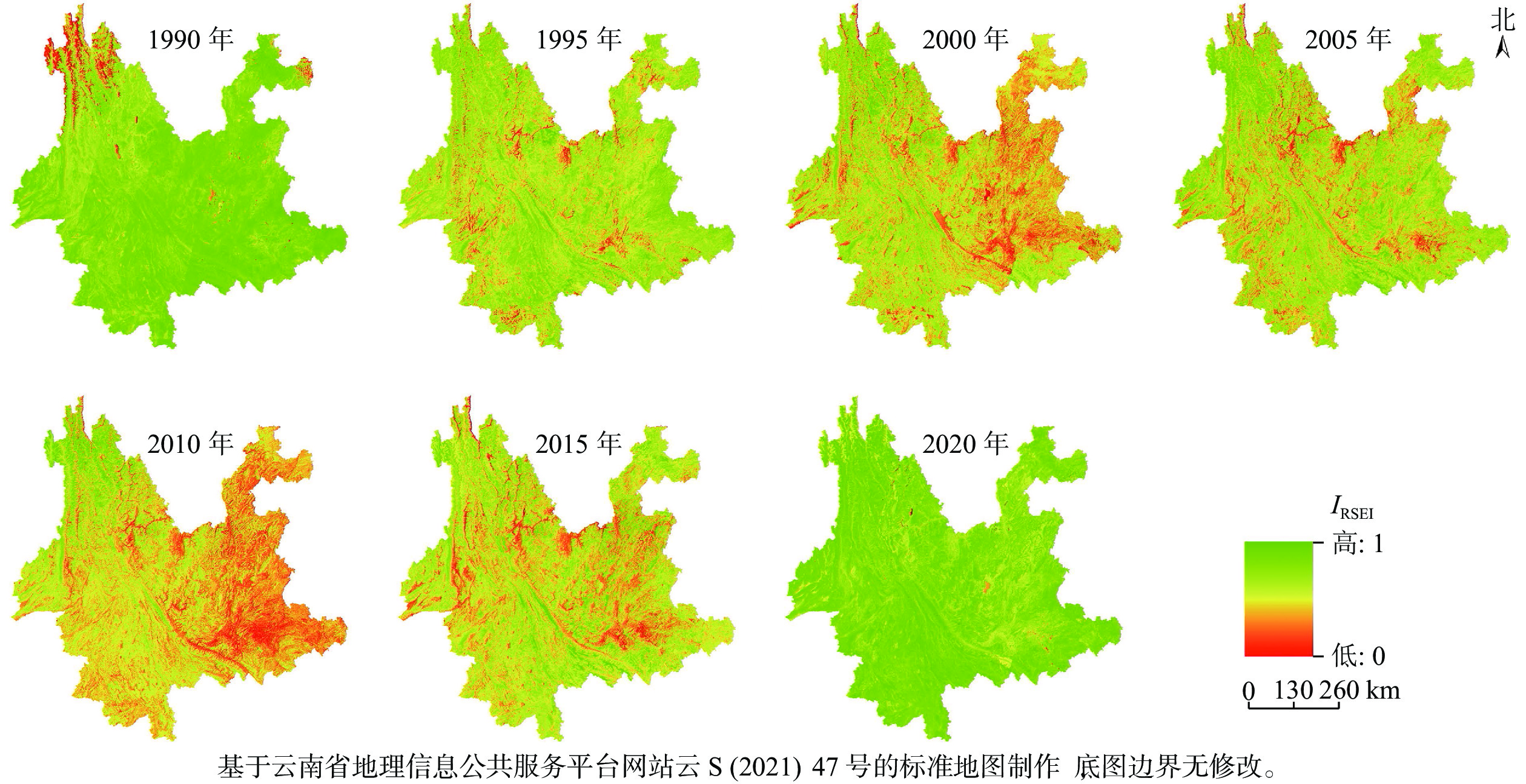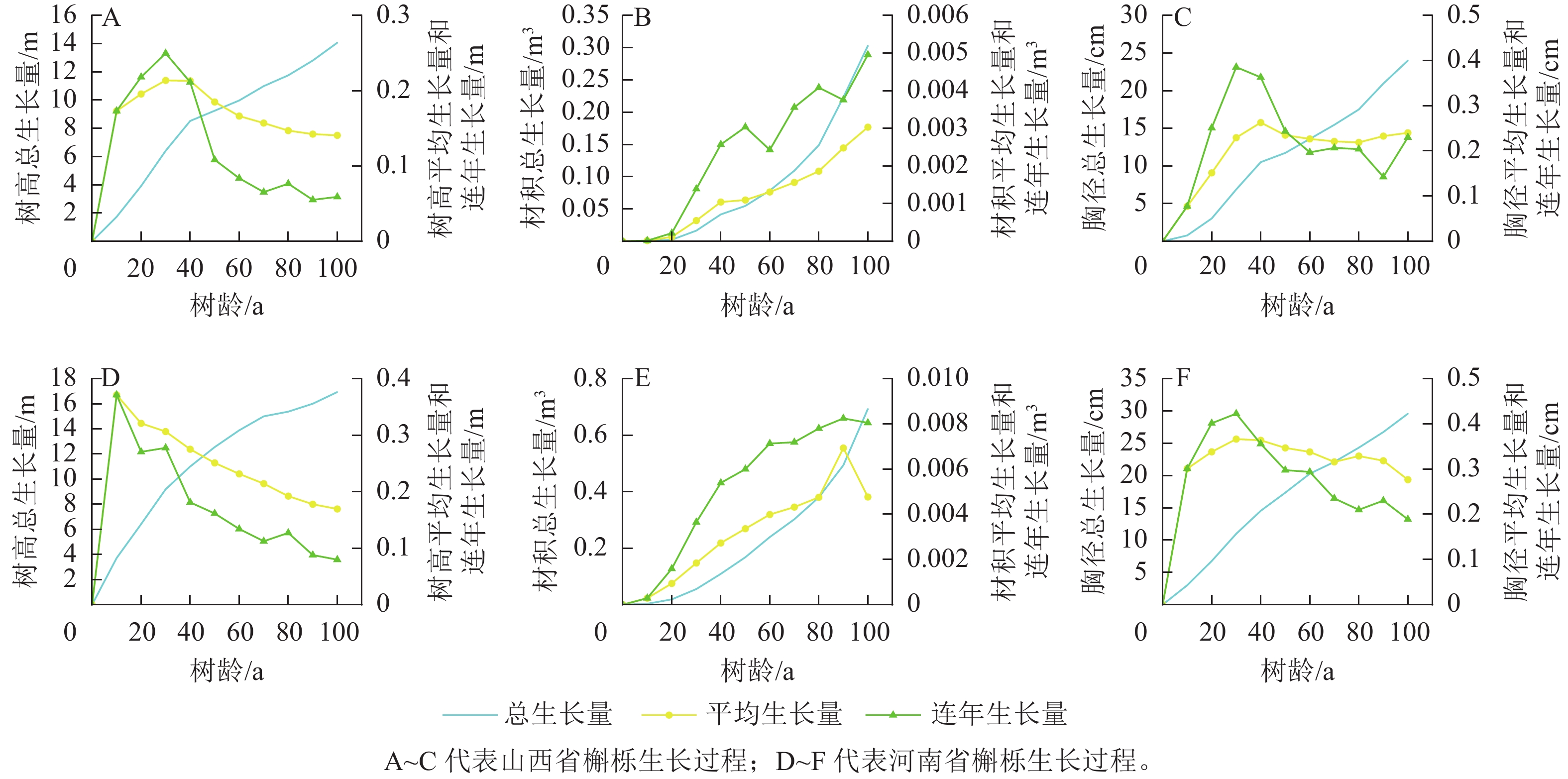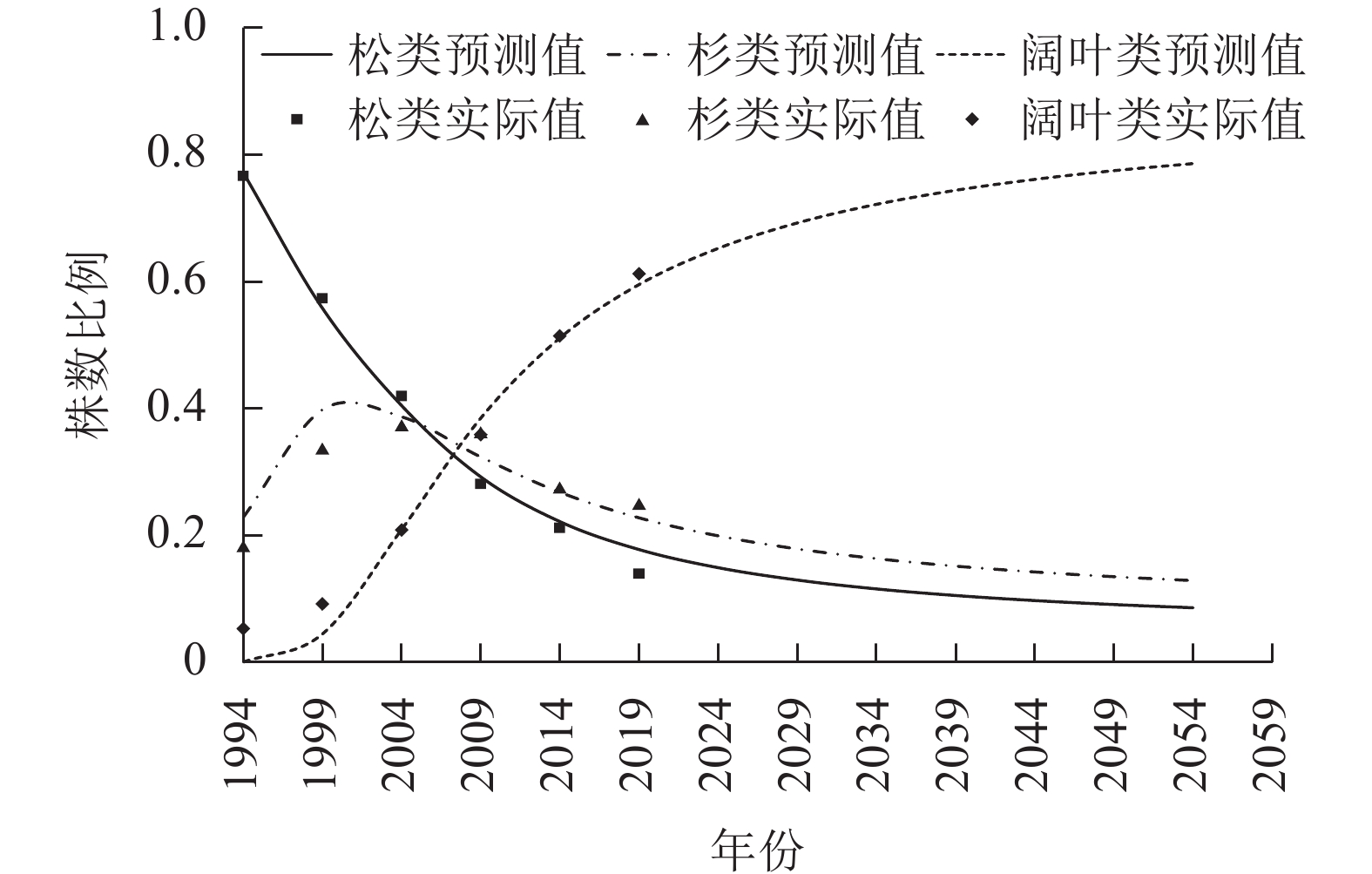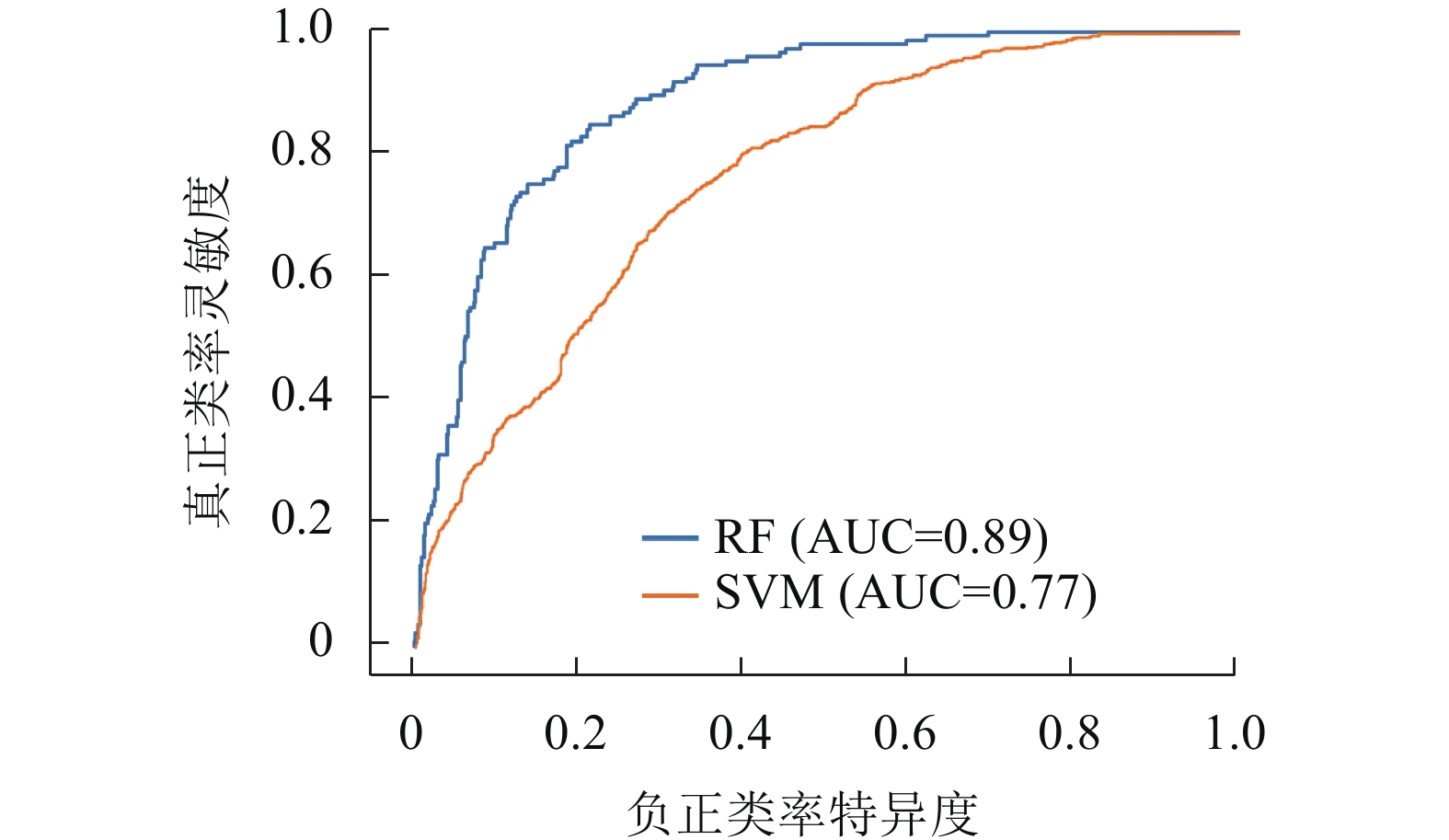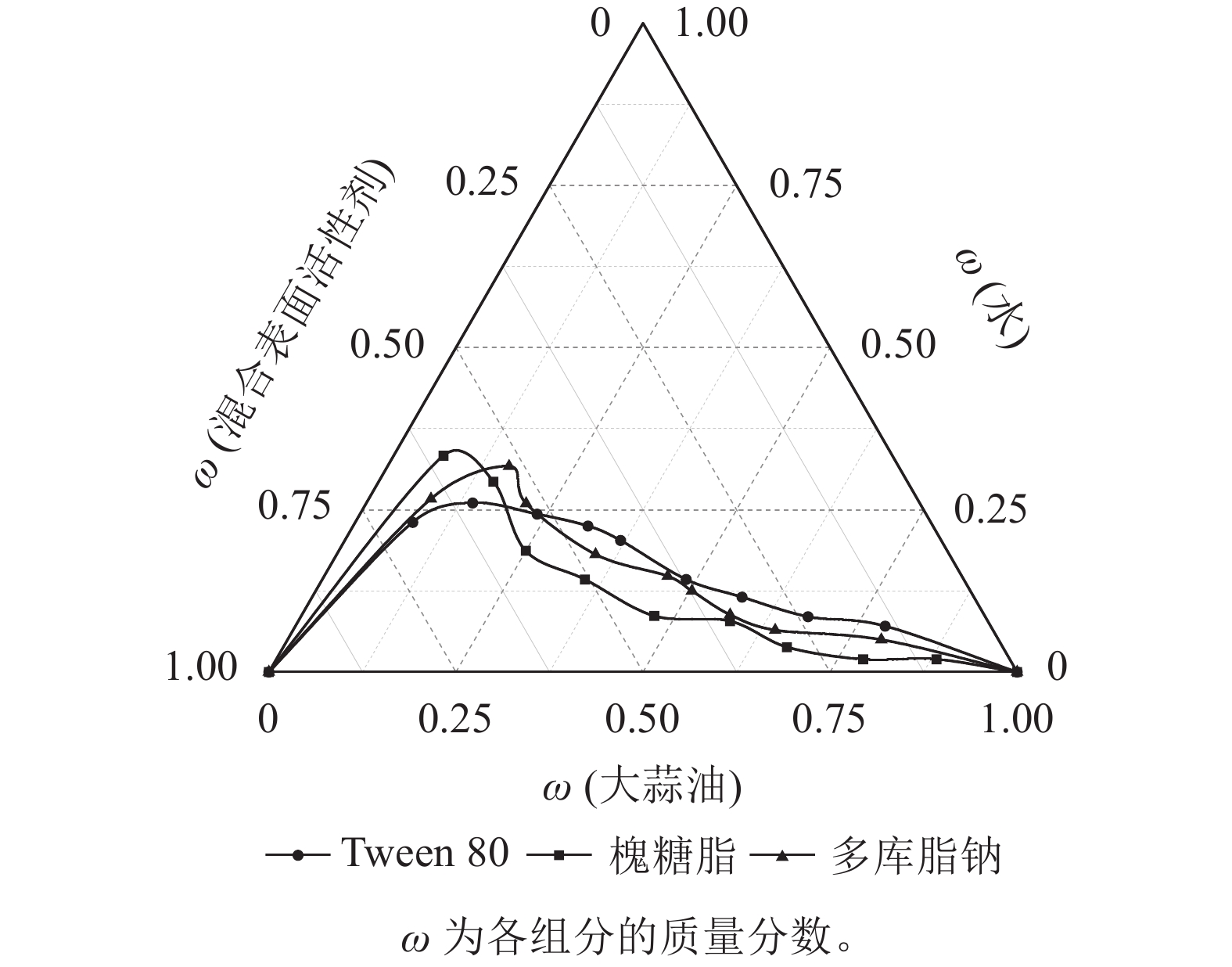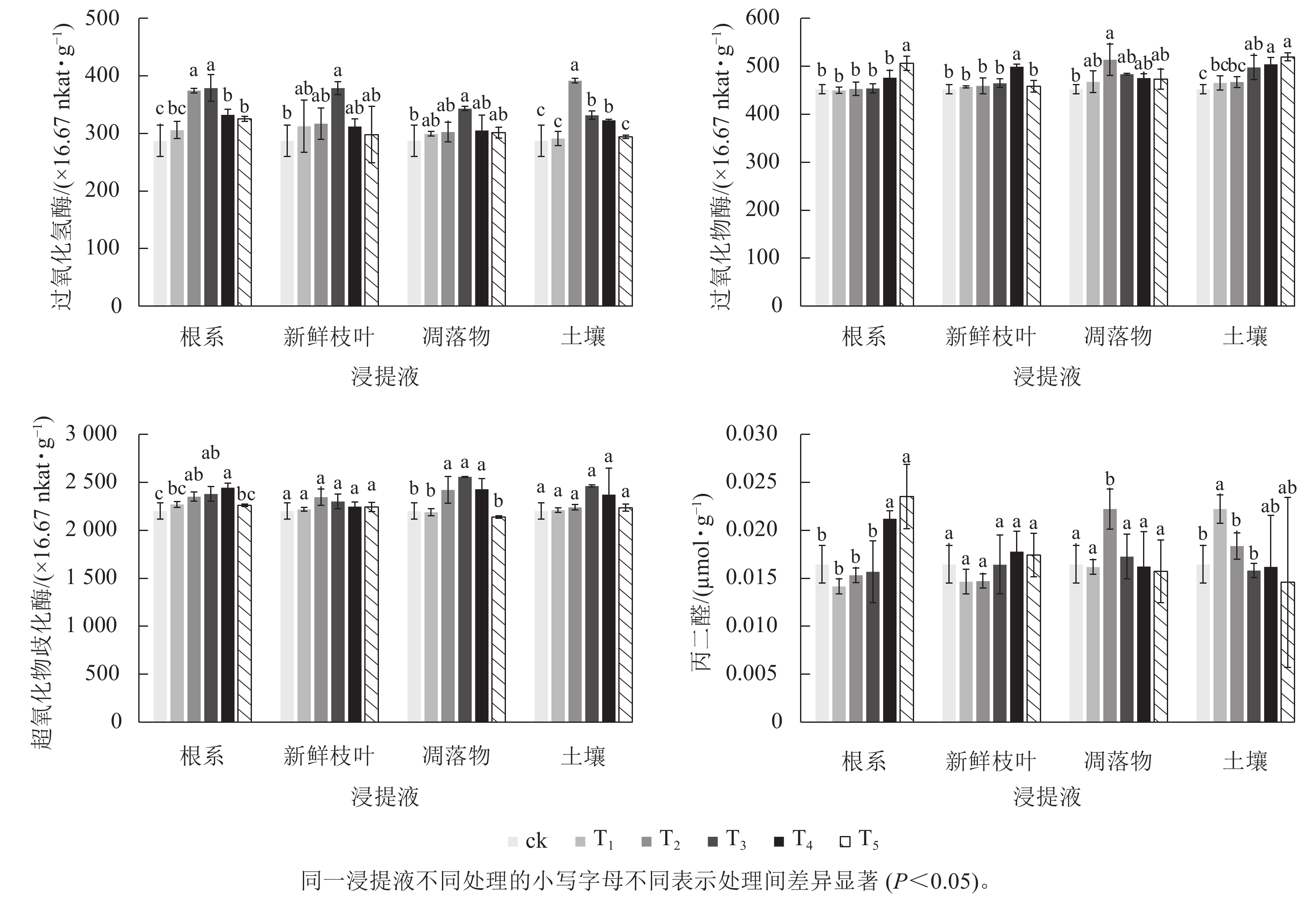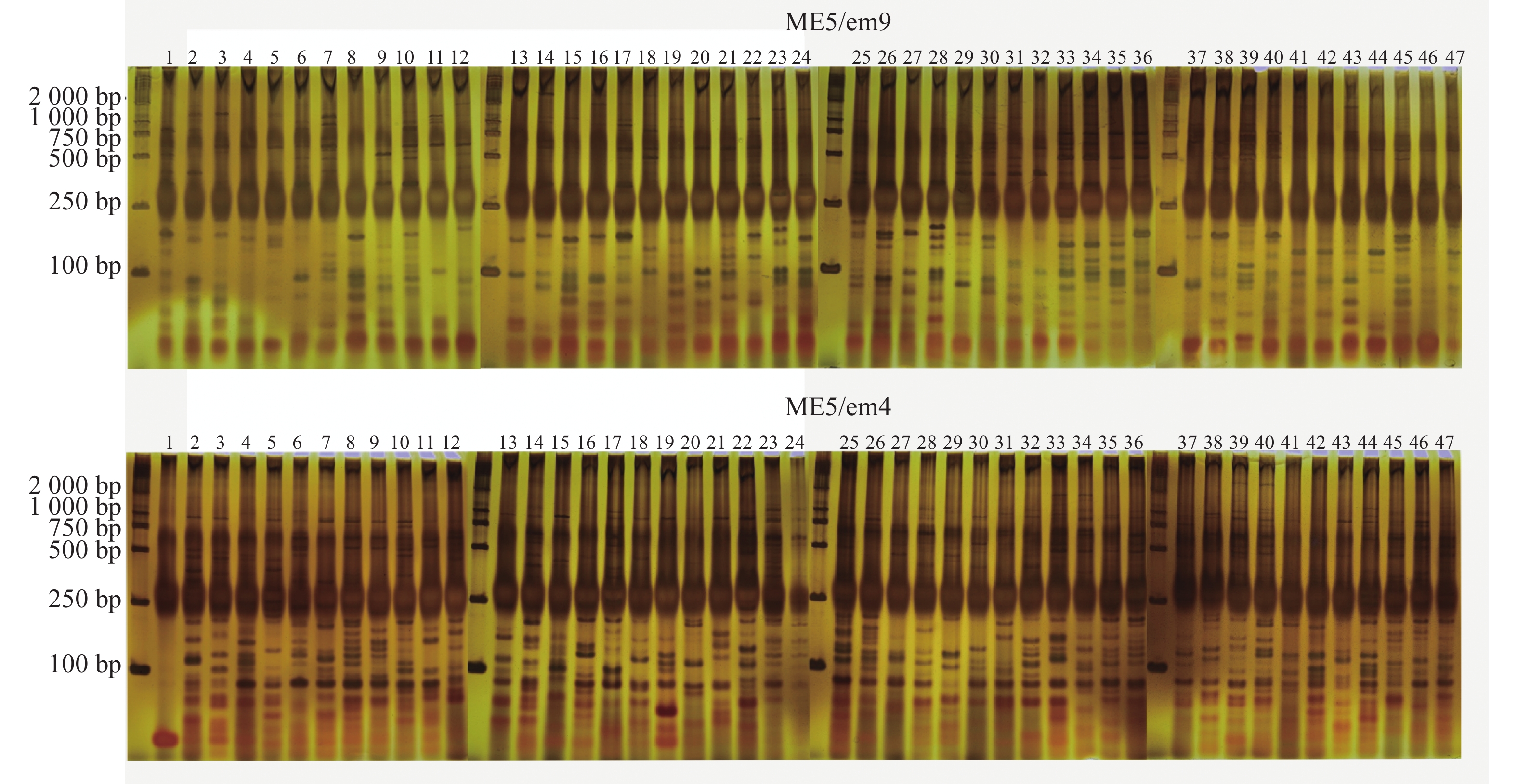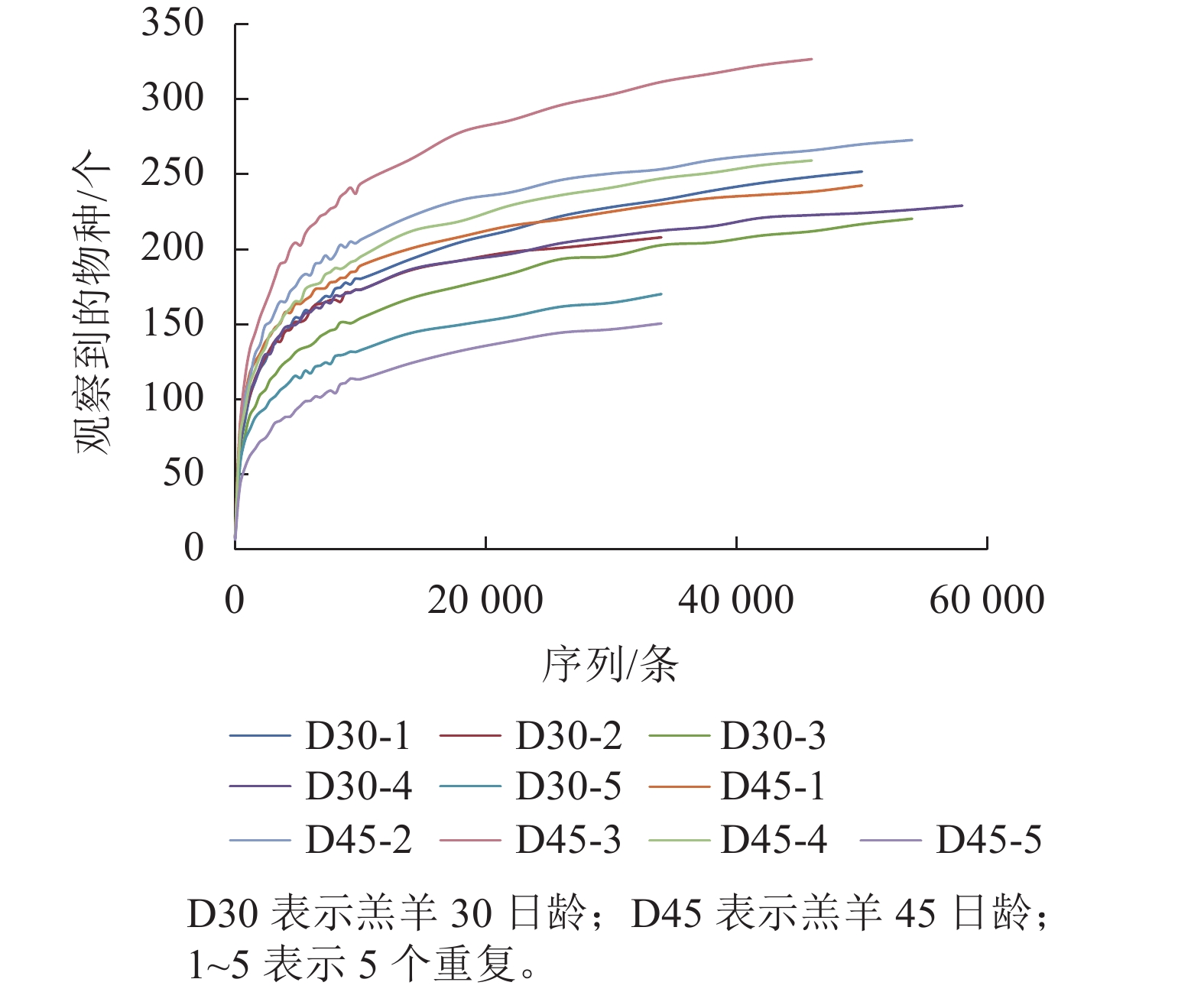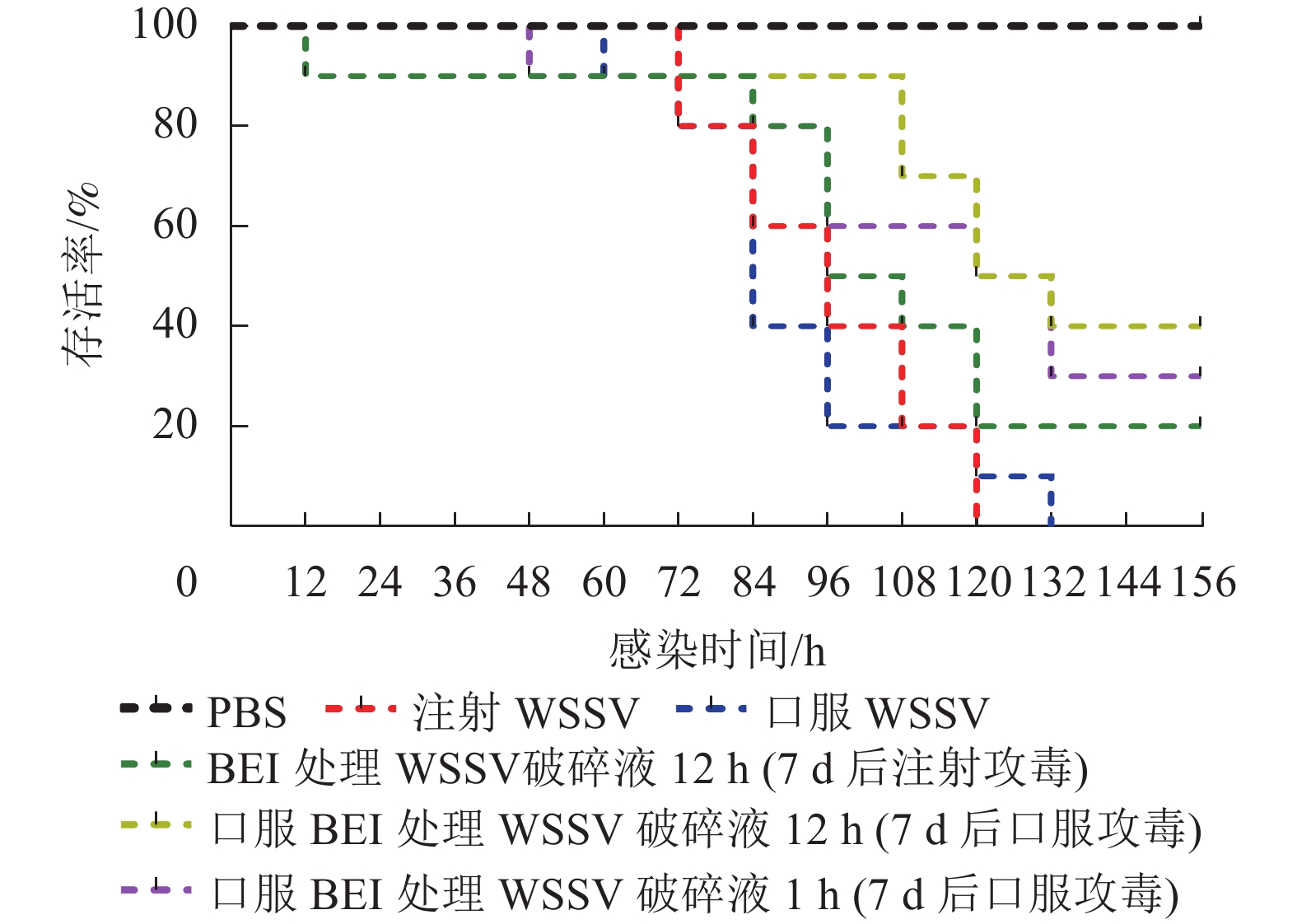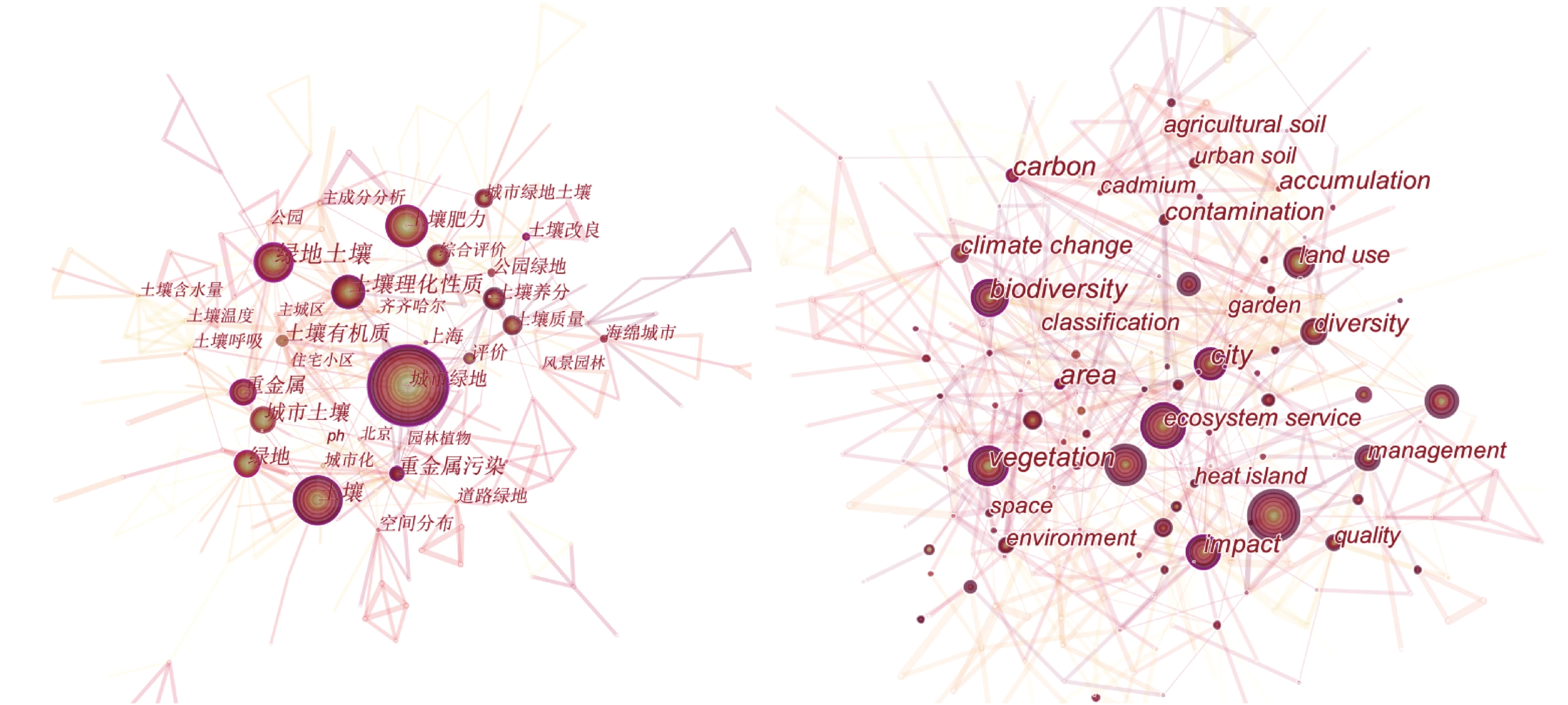2023 Vol. 40, No. 3
2023, 40(3): 465-474.
doi: 10.11833/j.issn.2095-0756.20220456
Abstract:
Objective Fragrance is one of the most important ornamental traits of Osmanthus fragrans. The purpose of this study is to identify the function of OfMYB1R47, a member of the MYB-related gene family of O. fragrans in the formation of aromatic volatiles, so as to provide a new gene node for the study of transcriptional regulation mechanism of aroma synthesis in O. fragrans. Method The MYB-related family gene OfMYB1R47 screened from the previous floral transcriptome data was used as the target gene, and O. fragrans ‘Rixianggui’ and Nicotiana benthamiana were used as materials. The characteristics and functions of OfMYB1R47 gene were analyzed by gene sequence and phylogenetic tree, RT-qPCR, subcellular localization, yeast self-activation, as well as the transient overexpression and GC-MS volatile metabolites test in N. benthamiana. Result The length of the open reading frame of OfMYB1R47 gene was 1 485 bp, encoding 494 amino acids. Phylogenetic tree analysis showed that OfMYB1R47 had the highest homology gene in Olea europaea subsp. europaea. RT-qPCR analysis showed that the expression pattern of OfMYB1R47 gene increased first, and then decreased with the release of O. fragrans aroma, and the highest expression level was found at the early flowering stage of O. fragrans. Subcellular localization and yeast self-activation tests showed that OfMYB1R47 was mainly distributed in the nucleus and had self-activation activity. Compared with plants transformed into empty vectors, the contents of octanal, β-ionone and other aroma volatiles in the leaves of N. benthamiana with transient over-expression of this gene were significantly changed. Conclusion OfMYB1R47 has typical transcription factor characteristics, and its expression pattern is related to the release of O. fragrans, which is involved in the regulation of the synthesis of floral substances such as β-ionone, and can be used as a gene resource for molecular breeding of O. fragrans. [Ch, 7 fig. 2 tab. 39 ref.]
2023, 40(3): 475-480.
doi: 10.11833/j.issn.2095-0756.20220782
Abstract:
Objective This study, with an investigation of the physiological and biochemical changes during the senescence of sweet Osmanthus fragrans flowers, is aimed to provide guidance for improving both ornamental and economical value of O. fragrans. Method With O. fragrans ‘Huangchuan Jingui’ selected as the experimental material, the release of cytochrome c (Cyt c) in the cytoplasm was determined by Western blotting; the content of adenosine triphosphate (ATP) was determined by high performance liquid chromatography; the endogenous ethylene production was determined by gas chromatography; the content of nuclear DNA were detected by flow cytometry and the changes of other physiological indicators such as free radicals during the flowering were also detected. Result (1) The amount of reactive oxygen species (ROS) in osmanthus petals reached the highest value in the initial flowering stage, and then it gradually decreased; (2) The content of Cyt c began to accumulate in the initial flowering stage and reached the highest in the full flowering stage, but decreased at the late full flowering stage whereas the ATP content declined during the whole flowering stages; (3) The ethylene release gradually increased from late full flowering stage to the maximum in the wilting petals, at which time the nuclear matter in the petals also disappeared; (4) The excitation of ROS, the release of Cyt c into the cytoplasm and the continuous decrease of ATP in petals of O. fragrans ‘Huangchuan Jingui’ mainly occurred in the initial flowering stage, which was an early programmed cell death (PCD) event while the climacteric of ethylene production and DNA degradation occurred in the late flowering stage, referred to as late PCD events. Conclusion Just as the decrease of mitochondrial functional activity may be the early PCD signal during the petal senescence of sweet osmanthus, petal wilting and DNA degradation related to endogenous ethylene production may be the result of PCD execution. [Ch, 5 fig. 31 ref.]
2023, 40(3): 481-491.
doi: 10.11833/j.issn.2095-0756.20220264
Abstract:
Objective The aim of this study is to explore the expression patterns of OfABF gene family members in different tissues and flower opening process of Osmanthus fragrans ‘Yanhonggui’, and screen the key members involved in regulating flower opening. Method The related OfABFs gene sequence was screened from the O. fragrans genome database for the full-length sequence and bioinformatics analysis. The spatio-temporal expression mode of OfABFs gene in different tissues and flower opening process of O. fragrans ‘Yanhonggui’ were analyzed by fluorescence quantitative PCR. Result 5 OfABFs sequences were screened. Bioinformatics analysis showed that O. fragrans OfABFs gene family protein was hydrophilic and unstable, and had no signal peptide. It was predicted that the protein secondary and tertiary structure had similar characteristics and irregular curl, and α-spiral was the main component of its structure. The 5 OfABFs transcription factors all contained the conserved domain of bZIP transcription factor family. Subcellular localization prediction showed that 5 OfABFs coding proteins were located in the nucleus. The results of fluorescence quantitative PCR showed that the expressions of OfABF1, OfABF2, OfABF3, OfABF4 and OfABF6 were tissue-specific, among which OfABF1, OfABF4 and OfABF6 were highly expressed in flowers. OfABF1 was transcriptionally activated in the apical shell stage, and its expression increased significantly. Although the expression level decreased after boll stem stage, it still maintained a high level. The expression of OfABF2 peaked in the apical shell stage, and the relative expression level was significantly higher than that in other stages. The relative expression levels of OfABF3, OfABF4 and OfABF6 were the highest in flower senescence stage. Conclusion OfABF1 and OfABF2 may be related to the blooming process of O. fragrans, while OfABF3, OfABF4 and OfABF6 are more likely to participate in the regulation of O. fragrans flower senescence. [Ch, 10 fig. 4 tab. 32 ref.]
2023, 40(3): 492-501.
doi: 10.11833/j.issn.2095-0756.20220783
Abstract:
Objective The objective of this study is to identify and analyze the gene family of OfACOs in ethylene biosynthesis pathway, so as to explore the key 1-aminocyclopropane-1-carbox-ylate oxidase (ACO) family members involved in the ethylene synthesis of Osmanthus fragrans petals. Method The identification, evolutionary analysis, gene structure analysis, and expression pattern analysis of OfACOs gene family at root, stem, leaf, bud and different flowering stages were carried out taking O. fragrans ‘Liuye Jingui’ as the reference genome. Result Through the analysis of protein conserved domain (protein families, pfam), a total of 122 OfACOs members were identified from O. fragrans genome, which were distributed on 22 chromosomes. The conserved motif analysis showed that most OfACOs genes contained Motif 1, Motif 2, Motif 3, Motif 4, and Motif 7, which together formed the OfACOs conserved domain. Collinearity analysis showed that OfACOs genes that were colinear with Arabidopsis thaliana genes might have similar functions. Combined with comparative analysis of switch-prot homologous sequence, 27 OfACOs members were selected as candidate research objects for transcriptome sequencing analysis of different tissue parts, including root, stem, leaf, bud and different flowering stages, and the results showed that 12 OfACOs members were significantly expressed in petals, among which LYG006223, LYG007706, LYG007045, and LYG035696 were significantly up-regulated in the late flowering stage. The four members were further analyzed by RT-qPCR analysis, and the results were consistent with those of transcriptome sequencing. Conclusion Through the whole genome identification and gene cloning analysis of OfACOs gene family, four members of OfACOs which are significantly up-regulated in the late flowering stage are screened, which may participate in O. fragrans petal senescence. [Ch, 6 fig. 34 ref.]
2023, 40(3): 502-510.
doi: 10.11833/j.issn.2095-0756.20220533
Abstract:
Objective This study, with an attempt to uncover the impact of ant activities on soil respiration in tropical forest soils, is aimed to provide database for the exploration of the biological mechanism of how soil fauna mediate “land-atmosphere” carbon exchange. Method With two experimental treatments (ant nests VS the control) set up in the Musa acuminata community in tropical Xishuangbanna, the soil respiration rates were measured employing the Li-6400-09-portable respiration chambers before an analysis was conducted of the ant-mediated effects of the changes in temperature and moisture, microbial biomass carbon, and the levels of carbon (C) and nitrogen (N) components on soil respiration. Result (1) Soil respiration rates were 1.37-fold higher in ant nests (7.19 μmol·m−2·s−1) than in reference soils (5.24 μmol·m−2·s−1). (2) Soil respiration had a single-peak temporal fluctuation in ant nests and the reference soils, with the maximum observed in September (10.64, 7.90 μmol·m−2·s−1). (3) The average interpreted extents of soil respiration variations by ant nest temperature and microbial biomass carbon (82.32%, 70.85%) in three soil layers were both higher than those in control soils (73.20%, 52.50%) (P<0.05) whereas the interpretation extent of respiration variations by nest moisture was lower than that in reference soils. (4) Ant activities elevated the levels of soil C and N pool (5.29%−65.95%), thereby affecting soil respiration rate. (5) Ant-mediatied changes of temperature, moisture, microbial biomass carbon, total organic carbon and ammonium nitrogen were the main factors controlling soil respiration in accordance with the principal component analysis. Conclusion Ant activities can mediate the soil respiration process, mainly through modifying the soil microclimate, the size of carbon and nitrogen pools in tropical forest. [Ch, 5 fig. 2 tab. 38 ref.]
2023, 40(3): 511-519.
doi: 10.11833/j.issn.2095-0756.20220417
Abstract:
Objective The objective is to study the stoichiometric characteristics of soil carbon (C), nitrogen (N) and phosphorus (P) of Pinus yunnanensis under different vegetation restoration modes, so as to provide the basis for vegetation restoration and fertility improvement in karst rocky desertification areas. Method Pure forest, artificial mixed forest and natural secondary forest of P. yunnanensis were selected as research objects in the rocky desertification area of eastern Yunnan. The contents of C, N and P in 0−10, 10−20, 20−40 and 40−60 cm soil layers of various plots were measured , the stoichiometric ratio was calculated and the influencing factors of soil stoichiometric characteristics were analyzed with redundancy analysis tools. Result The average contents of soil C, N and P of P. yunnanensis vegetation were 2.94, 0.26 and 0.46 g·kg−1, showing a pattern of low C and low N. The soil organic C content in natural secondary forest was significantly higher than that in artificial mixed forest and pure forest (P<0.05), and the artificial mixed forest had the richest soil N and P contents. There was no significant difference in soil P content (P>0.05). Soil organic C content in natural secondary forest increased with soil deepening, while soil C and N contents in artificial mixed forest and pure forest reached the maximum in 0−10 cm soil layer, showing a surface aggregation. The soil P content had little variation in different soil layers of P. yunnanensis. The mean values of soil C/N, N/P and C/P in P. yunnanensis vegetation were 11.43, 0.59 and 4.53, and the values of soil C/N and C/P in natural secondary forest were significantly higher than those in pure forest and artificial mixed forest (P<0.05). The soil N/P ratio in pure forest was the greatest. In the 3 P. yunnanensis vegetation types, the soil N/P ratio was less than 14 and the litter N/P ratio was less than 25, so soil N was deficient and litter decomposition was also limited by N. The natural secondary forest was the most deficient in soil N. With the deepening of soil, the soil C/N ratio in artificial mixed forest and pure forest decreased, so did the soil N/P ratio and C/P ratio of the 3 P. yunnanensis vegetation. The stoichiometric characteristics of soil C, N and P in the study area were affected by the litter C/N ratio, soil macroaggregates, bulk density, porosity, root length density and other environmental factors. Conclusion The vegetation soil of P. yunnanensis in eastern Yunnan presents a pattern of low C and low N, which is mainly limited by N elements. It is suggested that mixed forest should be used instead of pure forest in vegetation restoration of P. yunnanensis, and fertilization should be applied to vegetation with limited elements. [Ch, 4 fig. 3 tab. 33 ref.]
2023, 40(3): 520-530.
doi: 10.11833/j.issn.2095-0756.20220494
Abstract:
Objective Continuous cropping obstacles have caused huge economic losses to agricultural production. There are differences in the ability of plants to tolerate continuous cropping obstacles. Few studies have been reported on continuous cropping obstacles of Poaceae plants. This study tries to explore the mechanisms of different plants’ resistance to continuous cropping by investigating 7 soil enzymes in different plants (families) after 3 seasons of continuous cropping. Method Two species of plants from each family of Fabaceae, Cucurbaceae, Solanaceae and 5 species of Poaceae family were selected for simulated continuous pot experiment. Soil in the root zone of the plants in the 1st and 3rd seasons was collected after harvest to analyze the soil pH, available nitrogen (AN) and phosphorus (AP) and the activities of enzymes related to carbon, nitrogen and AP cycling. Result The soil pH showed a decreasing trend after continuous cropping of different plants for 3 seasons, among which the soil pH of Zea mays in the 1st and 3rd seasons was always the highest, while that of Citrullus lanatus was the lowest. The contents of soil AN and AP increased significantly, and AN and AP contents in the soil of most plants in the 3rd season were above 500 mg kg−1. There was no difference in soil enzyme activities among the treatments in the 1st season, while in the 3rd season, soil α-glucosidase (AG) of plants of other families was higher than that of Poaceae plants, and cellobiohydrolase (CB) was the opposite. The changes of soil enzymes in different families and even in the 2 plants of the same family were not consistent. A clear rule was that in 1st and 3rd seasons the acid phosphatas (PHOS) activity in the soil of Panicinae subfamily plants was the highest, and the activity of β-1,4-xylosidase (XYL) in Poaceae family was significantly higher (P<0.05) than other families in the third season. The soil of Pooideae was generally higher than that of Panicinae. Soil enzyme showed a dynamic increasing trend in general. The activities of CB, PHOS and leucine aminopeptidase (LAP) enzymes increased most in Pooideae, Cucurbaceae and Panicinae, respectively. Soil PHOS enzyme activities of Panicinae and Pooideae, which belonged to the same family of Poaceae, exhibited the opposite trend of decreasing and increasing. Conclusion The soil PHOS and XYL activities of Poaceae plants are higher, and other enzyme activities do not show obvious changes in the same family. [Ch, 5 fig. 2 tab. 35 ref.]
2023, 40(3): 531-539.
doi: 10.11833/j.issn.2095-0756.20220487
Abstract:
Objective With a field survey, this study is aimed to investigate the responses of sweet potato (Ipomoea batatas) yield, soil microbial biomass, enzyme activity and stoichiometry to mineral conditioner application and determine the main factors affecting the status of soil microbial nutrient limitation so as to provide a theoretical basis for improving the fertility of hilly red soil in Southern China. Method With a non-amended control (ck), a mineral conditioner amendment which was prepared from a mixture of dolomite and potassium feldspar, was applied at 3 (W1) and 6 t·hm−2 (W2), respectively. Result Compared with ck, the application of mineral conditioner significantly decreased soil exchangeable acid content (P<0.05); The W2 treatment significantly increased soil pH, available nitrogen (N) and available phosphorus (P) contents(P<0.05), but had no significant effect on the yield of sweet potato; Compared with ck, W1 and W2 significantly increased soil microbial biomass nitrogen (MBN) and carbon (MBC) (91.1% and 67.1%, respectively, P<0.05), while both of them increased the ratio of microbial biomass nitrogen/phosphorus ratio (MBN/MBP) (148.2% and 131.8%, respectively, P<0.05); Compared with ck, W1 and W2 significantly reduced the activity of acid phosphatase (by 31.9% and 45.4%, respectively, P<0.05), and W2 treatment significantly reduced the activity of leucine aminopeptidase (by 52.4%, P<0.05), but they had no significant effect on the activities of β-glucosidase, cellobiohydrolase and β-1,4-N-acetylglucosaminidase; Soil enzymatic stoichiometry showed that W2 significantly increased the vector length (by 19.7%, P<0.05) and reduced the vector angle (by 10.5%, P<0.05), indicating that the high amendment rate of mineral conditioner increased microbial C limitation and alleviated their P limitation. As was shown by redundant analysis, soil pH, available N, MBC and MBN were the main factors affecting soil enzyme activity and its stoichiometry. Conclusion The application of mineral conditioner can effectively reduce soil acidity, increase the available nutrient content, and alleviate soil microbial P limitation, thereby helping to potentially reduce the P limitation to crop growth in hilly red soils from Southern China. [Ch, 3 fig. 2 tab. 32 ref.]
2023, 40(3): 540-549.
doi: 10.11833/j.issn.2095-0756.20220360
Abstract:
Objective This study aims to explore the effects of applying organic fertilizer and biochar-based fertilizer instead of chemical fertilizer on the amount and form of soil nitrogen and phosphorus loss from runoff in the sloping farmland of sweet potatoes (Ipomoea batatas), and to analyze the relationship between nutrient runoff loss and soil chemical properties. Method A randomized block design was used to investigate the effects of organic fertilizer and biochar-based fertilizer on nitrogen and phosphorus runoff loss in sweet potato sloping farmland. There were 4 treatments: no fertilizer, conventional fertilizer, 50% organic fertilizer instead of chemical fertilizer, and 100% biochar-based fertilizer. Result The concentration of total nitrogen, particulate nitrogen, nitrate-nitrogen, and ammonium-nitrogen in runoff had a peak effect, and the effect of organic fertilizer substitution and biochar-based fertilizer differed in different runoff events. Compared with conventional chemical fertilizer, organic fertilizer and biochar-based fertilizer reduced the annual nitrogen runoff loss by 48.1% and 39.6%, respectively, while total phosphorus decreased by 26.1% and 32.7%, respectively. The substitution of organic fertilizer and biochar-based fertilizer for chemical fertilizer changed the form and composition of nitrogen and phosphorus in runoff and decreased the runoff loss coefficient of fertilizer. The loss of total nitrogen (R2=0.49) and total phosphorus (R2=0.48) was positively correlated with soil nitrate-nitrogen (P< 0.05). Soil available phosphorus explained 60% and 41% of total nitrogen and total phosphorus runoff loss, respectively. Conclusion Applying organic fertilizer and biochar-based fertilizer instead of chemical fertilizer are effective measure to reduce nutrient runoff loss in sloping farmland. 50% organic fertilizer is more suitable for reducing nitrogen runoff loss in sweet potato sloping farmland, while biochar-based fertilizer is more suitable for reducing phosphorus runoff loss. [Ch, 7 fig. 2 tab. 33 ref.]
2023, 40(3): 550-559.
doi: 10.11833/j.issn.2095-0756.20220481
Abstract:
Objective The objective is to explore the water use strategies of eucalyptus plantations to adapt to seasonal drought, so as to provide data support for assessing the impact of future rainfall patterns on eucalyptus industry and accurately guiding the sustainable management of eucalyptus industry and efficient use of water resources. Method Eucalyptus urophylla × E. grandis, the most widespread eucalyptus species in the Leizhou Peninsula, was taken as the research object. The differences in water use sources during dry and rainy seasons were discussed in depth by measuring the δD and δ18O values of xylem water, soil water in each soil layer and groundwater during typical dry and rainy seasons, and the MixSIAR model was used to quantify the utilization proportion of soil water and groundwater in each soil layer by E. urophylla × E. grandis in dry and rainy seasons. Result There was an obvious evaporative enrichment in local atmospheric precipitation, and the δ18O value showed a clear seasonal pattern of negative in rainy season and positive in dry season. Soil moisture content in each month increased with the depth and eventually became stable. Soil moisture content was significantly lower in dry season than in rainy season (P<0.05), and the difference was even greater close to the surface. E. urophylla × E. grandis mainly used 0−40 and 40−100 cm soil water in rainy season, with the utilization ratio of 28.0% and 24.3% respectively. In dry season it mainly used 50−200 cm soil water and groundwater, with the utilization ratio of 29.9% and 22.6% respectively. After a large amount of precipitation in dry season, soil water, especially shallow soil water, was greatly replenished, and the proportion of surface soil water used by E. urophylla × E. grandis in the 0−40 and 40−100 cm layers increased by 111.4% and 10.3% respectively, while the utilization proportion of 100−150 and 150−200 cm soil water and groundwater decreased by 3.1%, 40.1% and 15.9%, respectively. Conclusion E. urophylla × E. grandis has a flexible water use source strategy in the face of changes in environmental available water resources, indicating that it has strong adaptability to seasonal drought. [Ch, 5 fig. 1 tab. 44 ref.]
2023, 40(3): 560-568.
doi: 10.11833/j.issn.2095-0756.20220451
Abstract:
Objective This study aims to predict the potential distribution and migration of Pinus sylvestris var. mongolica under different climate conditions in China and to determine the main environmental variables affecting its distribution, so as to provide theoretical basis for rational introduction and protection of P. sylvestris var. mongolica. Method Based on 200 distribution points and 20 environmental variables, the potential distribution of P. sylvestris var. mongolica under current climate conditions was simulated by using ENMeval packet optimization maximum entropy model (MaxEnt) in R language and ArcGIS spatial analysis technology. Through Pearson correlation analysis and variance inflation factor analysis combined with the screening of environmental factors based on pre-modeling results, Jackknife test and correlation coefficient were integrated to analyze the dominant limiting factors of P. sylvestris var. mongolica, and predict the change trend of suitable habitat under three climate scenarios (SSP126, SSP245 and SSP585) from the current to the future (2050s and 2100s). Result The area under ROC curve of the MaxEnt model was greater than 0.94, indicating that the model had high accuracy and could better predict the potential distribution of P. sylvestris var. mongolica. The main factors affecting the distribution were the average temperature in the coldest quarter, seasonal variation of precipitation, minimum temperature in the coldest month, seasonal variation coefficient of temperature, average temperature in the driest quarter and maximum temperature in the hottest month, with a cumulative contribution rate of 92.9%. Under the current climate conditions, the suitable distribution area of P. sylvestris var. mongolica was mainly located in the Greater Hinggan Mountains of China, and the total suitable area accounted for 6.72% of the total area of China. In the future, the potential distribution area of P. sylvestris var. mongolica would decrease under different climatic conditions, and the centroid would migrate to the northwest area at high latitude and southwest area with abundant precipitation. Conclusion The annual temperature and precipitation are the main factors affecting the distribution of P. sylvestris var. mongolica. At present, the suitable growing areas are mainly concentrated in the Greater Hinggan Mountains of China, and its distribution will migrate to the northwest and southwest of the existing distribution area in the future. [Ch, 1 fig. 7 tab. 29 ref.]
2023, 40(3): 569-578.
doi: 10.11833/j.issn.2095-0756.20220433
Abstract:
Objective The objective is to study the plant composition and diversity index of Robinia pseudoacacia plantation, Pinus tabulaeformis plantation, R. pseudoacacia-P. tabulaeformis mixed forest, and Populus davidiana-Quercus natural secondary forest in the loess area of western Shanxi Province, and to explore the diversity of shrubs and herbaceous plants under different stand types and different densities, so as to provide theoretical basis for vegetation construction and function improvement in the loess region of western Shanxi. Method Through field investigation, the composition and diversity of understory plants were analyzed in 4 stands aged 22−25 years under the conditions of low density (800−1 200 plants·hm−2), medium density (1 200−1 600 plants·hm−2) and high density (1 600−2 000 plants·hm−2). Result (1)There were 87 species of shrubs and herbaceous plants in the 4 forests, belonging to 36 families and 69 genera, including 46 species of shrubs in 22 families and 36 genera, and 41 species of herbs in 17 families and 33 genera. The number of understory shrubs and herbaceous plants was the largest at medium density, showing that the natural secondary forest of P. davidiana-Quercus was the highest, and the artificial forest of P. tabulaeformis was the least. The number of plant species in the shrub layer of R. pseudoacacia-P. tabulaeformis mixed forest was at a high level, and the number of plant species in the grass layer of R. pseudoacacia was more abundant than that in R. pseudoacacia-P. tabulaeformis mixed forest. (2) The shrub and herbaceous plants in the 4 stands showed a transition pattern from sunny to mesophytic and shade plants with the increase of stand density. The dominant shrubs were Rosa xanthine and Forsythia suspensa, and the dominant herbs were Carex spp. and Ophiopogon bodinieri. (3) There were certain differences in plant diversity index between shrub layer and herb layer in different stand types. The plant diversity of P. davidiana and Quercus natural secondary forest and R. pseudoacacia-P. tabulaeformis mixed forest at medium density was better than that of pure artificial forest, and with the increase of stand density the plant diversity index of shrub layer and herb layer as a whole showed a trend of first increasing and then decreasing. Conclusion P. davidiana-Quercus natural secondary forest and R. pseudoacacia-P. tabulaeformis mixed forest in the study area have complex plant composition and high plant diversity at medium density. It is recommended to adjust the stand density by artificial tending, and transform it into medium-density R. pseudoacacia-P. tabulaeformis mixed forest or near-natural forest, protect P. davidiana-Quercus natural secondary forest in the study area for better vegetation restoration and soil and water conservation function. [Ch, 1 fig. 4 tab. 26 ref.]
2023, 40(3): 579-588.
doi: 10.11833/j.issn.2095-0756.20220439
Abstract:
Objective This study, with an analysis of the changes of ecological quality in Yunnan Province since the 1990s, is aimed to provide support for the further protection, restoration and promotion of ecological security barriers in Southwest China. Method Remote Sensing based Ecological Index (IRSEI) and spatial auto-correlation analysis were employed to study the regularities and characteristics of ecological quality from two dimensions (time and space). Result (1) In terms of time scale, the overall change of IRSEI in Yunnan Province from 1990 to 2020 is featured with the “W” type, showing a trend of first decreasing, then decreasing after a slight rise, and continuously increasing finally, falling to the lowest level twice in 2000 and 2010 with a general decrease of 0.038 in 30 years and an overall slope of linear fitting of −0.008. (2) In terms of spatial scale, the overall variation of the seven regions’ IRSEI in Yunnan Province is relatively small in 1995 and 2005, with generally stable and minor variation grades but a relatively large fluctuation in 2000 and 2010 and the volatility of Western and Northwestern Yunnan where the coefficient of variation is 0.115 and 0.171 respectively is larger than that of other regions in 1990. (3) At the county scale, the spatial auto-correlation degree of IRSEI in Yunnan Province from 1990 to 2020 shows a tendency of decreasing and gradually slowing down. At the same time, high-high cluster shifts from Northeastern, Southeastern and Southern Yunnan to Western, Northwestern and Southwestern Yunnan, while low-low cluster shifts to Northeastern, Southeastern, Southern and Central Yunnan, especially where rocky desertification is distributed. Conclusion The overall ecological quality of Yunnan Province enjoys a gradual improvement, especially after 2010, of which more attention should be paid to the impact of karst rocky desertification and meteorological disaster on the ecological quality. [Ch, 4 fig. 1 tab. 39 ref.]
2023, 40(3): 589-597.
doi: 10.11833/j.issn.2095-0756.20220455
Abstract:
Objective This study, with the construction of a growth model and the analysis of the growth pattern of Quercus, is aimed to provide reference for accurate quality improvement, structure optimization and rational management of Quercus. Method First, with the original data of trunk analysis of three species of Quercus (Q. aliena, Q. acutissima and Q. variabilis) at each period collected, an investigation was conducted of the growth pattern of tree height, volume and diameter at breast height (DBH). Then, four theoretical growth equations, one empirical growth equation and three bark thickness equations were selected for the fitting and testing of the growth process of the height, volume, DBH and bark thickness of the wood so as to find out the most suitable tree growth model. Result (1) The single tree growth process of Quercus accorded with the generally regular pattern of forest growth, with the growth of height and DBH being faster in the first 40−50 years and then slowing down with the decrease of average growth and annual growth while the tree volume kept increasing with the increase of tree age; (2) As was shown in model fitting results, the optimal growth equation of the height was the Logistic equation, the optimal growth equation of the volume was the Compertz equation whereas the optimal growth equation of the DBH was the Weibull modified equation; (3) As for the impact of climate on Quercus growth, climate variation led to significant differences of Q. aliena growth as was shown in those growing in Shanxi Province and Henan Province respectively; (4) The optimal bark thickness fitting model was Binary linear model. Conclusion The tree height equation, with strong fitting effect on Quercus growth, has strong practical significance and Q. aliena is more sensitive to climate. [Ch, 5 fig. 4 tab. 23 ref.]
2023, 40(3): 598-607.
doi: 10.11833/j.issn.2095-0756.20220521
Abstract:
Objective Different plant species and groups, with dominant species, common species, occasional species and rare species included, often demonstrate various ecological characteristics. Therefore, this study, with an investigation of the size structure and spatial pattern of different species and groups, is aimed to further explore mechanisms of species coexistence. Method With the long-term monitoring 1 hm2 plot of evergreen broad-leaved forest in Jiulong Mountain National Nature Reserve of Zhejiang Province, China selected as the subject, point pattern analysis was conducted of the size structure of 24 common species and different groups and their association with other groups and habitat factors. Result (1) The size structure of 15 species and common species, occasional species, and rare species was mainly distributed in an “L” shape with more small-diameter individuals. The size structure of 3 species was distributed in sporadic type and 3 species was distributed in unibar type. The size structure of 3 species and dominant species was close to the normal distribution; (2) The spatial distribution pattern of most species (21 out of 24) or groups was in aggregation and was affected by habitat heterogeneity; (3) Dominant species had negative spatial association with occasional species and rare species, and common species had positive spatial association with other groups whereas the significant spatial associations of 24 common species with other groups were mainly positive. Conclusion Most species and groups in the community were affected by habitat heterogeneity. At the same time, niche differentiation weakened the competition between species or groups, playing an important role in their coexistence. The community is temporarily in a stable state. [Ch, 3 fig. 3 tab. 33 ref.]
2023, 40(3): 608-616.
doi: 10.11833/j.issn.2095-0756.20220341
Abstract:
Objective This study, with an exploration of the composition changes among three tree species groups of pine, fir and broadleaf within 25 years between 1994 and 2019 in Taizhou City, Zhejiang Province, is aimed to investigate the possible future change trends so as to provide theoretic basis for future forest composition regulation. Method Based on six batches of continuous forest inventory data collected in Taizhou City, a self-constrained model with nonlinear equations was developed to simulate the proportion of numbers of trees and proportion of stem volume of three species over 25 years, and predict their future trends. Result (1) As a result of Bursaphelenchus xylophilus and natural succession, the proportion of pine species in Taizhou suffered a decrease, that of fir species reached a maximum between 1999 and 2004 and then decreased slowly whereas that of broadleaf species enjoyed a continuous and steady increase; (2) The proportions of trees of the pine, fir and broadleaf groups accounting for the total numbers will change from 14.00%, 24.90% and 61.20% in 2019 to 4.09%, 7.02% and 88.89% eventually, whereas the proportions of the three groups in terms of volumes will change from 24.60%, 29.70% and 45.70% in 2019 to 10.07%, 11.94% and 77.99% eventually. Conclusion The total amount of forest resources in Taizhou increased in the past 25 years and, with a structural change of tree species featured as “an increase in broadleaf and a decrease in coniferous forests”, it’s gradually developing into a top vegetation community. Although the proportion of pine and fir trees decreases continuously, it will eventually stabilize at a certain proportion instead of going extinct. Also, the proposed self-constrained model of nonlinear equations demonstrated good performance in the simulation of tree number proportion and volume proportion of forests. [Ch, 2 fig. 7 tab. 26 ref.]
2023, 40(3): 617-626.
doi: 10.11833/j.issn.2095-0756.20220470
Abstract:
Objective Considering the fact that pine wilt disease (PWD) has been the most serious disease threatening forest ecosystem in China. This study, with the simulation and expression of the driving variables by using geographic grid model and map algebra operation, is aimed to construct PWD measurement and forecasting system and form the spatial continuous measurement and prediction by using the dual scale of county area and geographic grid unit. Method First, datasets were formed by integrating geographic raster spatial data such as topography, meteorology, host, human activities and land use that affect PWD dispersal. Then, the model was constructed using the machine learning method of random forest and support vector machine before predicted results were superimposed with the susceptibility map of Pinaceae plants to perform the map algebraic operation of infection probability. Finally, an analysis was conducted of the risk level of PWD spread in the whole country based on geographic grid unit. Result (1) The prediction accuracy was 83.95% for the random forest model and 77.97% for the support vector machine model; (2) Altitude, average annual minimum precipitation, average annual precipitation and average annual low temperature were the main factors affecting the occurrence of PWD, with their contribution rates to the model construction being 0.151, 0.303, 0.258 and 0.194 respectively whereas human activity variables were the decisive variable affecting the diffusion of PWD with their contribution rate to the model construction being 0.194; (3) The potential dispersal areas were located in low altitude areas with dense human activities, forest areas adjacent to roads, urban distribution areas and plantation distribution areas while the highest risk areas were mainly Zhejiang, Jiangxi and Fujian in East China, Guangxi and Guangdong in South China as well as Hunan in central China. Conclusion With the employment of spatial simulation and machine learning methods, a mapping model was constructed to predict the spatial transmission pattern of PWD with diffusion risk of PWD predicted of specific geographical grid cells. It provides a reference for the accurate supervision of forest and grass disasters with practical guiding significance for the prevention and control of PWD epidemic in China. [Ch, 2 fig. 7 tab. 36 ref.]
2023, 40(3): 627-635.
doi: 10.11833/j.issn.2095-0756.20220336
Abstract:
Objective This study aims to prepare microemulsion from garlic oil in order to improve the stability of garlic oil and develop a new type of plant-derived algaecide. Method The effects of surfactant and co-surfactant types and mass ratio (Km) on the formation of garlic oil microemulsion system were investigated by phase transition method and pseudo-ternary diagram, and orthogonal experiments were carried out. The stability of garlic oil microemulsion prepared under the optimal conditions under different temperature, pH and centrifugation conditions of 5 000 and 10 000 r·min−1 was investigated, and the algae inhibition of garlic oil microemulsion experiment was carried out. Result The optimum preparation conditions were 25 ℃, Tween 80 as surfactant, ethanol and n-butanol as co-surfactants. The mass ratio of the three was 1∶1∶1, and the mass ratio of mixed surfactant and garlic oil was 4∶6. The obtained microemulsion was yellow clear transparent liquid with light blue luster. The average particle size was 20.1 nm and the polydispersity coefficient was 0.144. The algae inhibition rate of 320 mg·L−1 garlic oil microemulsion was 82.54%. Conclusion The successfully prepared oil-in-water type garlic oil microemulsion has good stability, suitable particle size, and obvious algae inhibitory effect. It is expected to be a new algaecide. [Ch, 9 fig. 3 tab. 31 ref.]
2023, 40(3): 636-647.
doi: 10.11833/j.issn.2095-0756.20220446
Abstract:
Objective The objective is to study the purification effects of aquatic ornamental plants on eutrophic water bodies. Method From late April 2020, different planting combinations were carried out with the water-holding plants Lythrum salicaria, Iris pseudacorus and Scirpus validus, the floating plants Nymphoides peltatum and Nymphaea tetragon, and the submerged plant Ceratophyllum demersum to compare their growth in water with 3 different levels of eutrophication: low, medium and high, and the water purification effects of removing total phosphorus (TP), total nitrogen (TN), ammonia nitrogen (NH3-N) and reducing chemical oxygen demand (COD). TP, TN, NH3-N and COD of the 3 experimental water bodies were 2.00, 0.20, 0.67, 20.00 mg·L−1, 10.00, 1.00, 3.34, 50.00 mg·L−1, and 20.00, 2.00, 6.67, 100.00 mg·L−1). Result (1) S. validus grew well in the eutrophic water body with low mass concentration, while L. salicaria and I. pseudacorus grew better in the treatment of medium and high mass concentration than in the treatment of low mass concentration. N. peltatum grew faster and better than N. tetragon, but it might affect the growth of combined plants. C. demersum grew weaker in combination with N. peltatum than with N. tetragon. (2) In the low concentration treatment, the S. validus, N. tetragon and C. demersum algae group had a better ability to remove TP from eutrophic water body in the early stage, with a removal rate of 47.57%. The combination of I. pseudacorus, N. tetragon and C. demersum algae had the best purification effect in the late stage, with a TP removal rate of 74.59%. In the medium and high concentration treatment, both the I. pseudacorus, N. tetragon and C. demersum algae group and S. validus, N. tetragon and C. demersum algae group had good TP removal effects. (3) In the low concentration treatment, the two planting combinations with S. validus had better removal effects, reaching 30.00% or more. In the medium concentration treatment, the TN removal effect of S. validus, N. tetragon and C. demersum algae group was better. I. pseudacorus, N. tetragon and C. demersum algae had good purification effect in the treatment of low, medium and high concentrations. (4) In the low concentration treatment, the group of S. validus, N. peltatum and C. demersum algae had the best effect of removing NH3-N, with a removal rate of 14.03%. In the medium concentration treatment, the group of L. salicaria, N. tetragon and C. demersum algae had the best purification effect, reaching 4.09%. In the high concentration treatment, both I.pseudacorus, N. tetragon and C. demersum algae group and S. validus, N. tetragon and C. demersum algae group had the best purification effect. (5) In the low concentration treatment, the effect of S. validus, N. tetragon and C. demersum algae group on COD removal was the best, up to 108.33%. The group of I. pseudacorus, N. tetragon and C. demersum algae had good purification effect in the treatment of low, medium and high concentrations, and the removal rates were 115.00%, 46.00% and 41.50% respectively. Conclusion The group of I. pseudacorus, N. tetragon and C. demersum has good purification effects in eutrophic water bodies of different concentrations and has high landscape application value. It proves to be the best planting combination. [Ch, 4 fig. 6 tab. 25 ref.]
2023, 40(3): 648-657.
doi: 10.11833/j.issn.2095-0756.20220471
Abstract:
Objective The purpose is to explore the allelopathic effects of forest extract of Phyllostachys edulis on Fritillaria thunbergii, so as to screen the suitable economic species for compound management of Ph. edulis and medicinal plants. Method F. thunbergii was selected as the target plant to carry out the allelopathy experiments of different extracts of Ph. edulis forest (roots, fresh branches and leaves, litter and 0~20 cm soil) at different concentrations (0.005, 0.010, 0.020, 0.050 and 0.100 kg·L−1). Result (1) The effects of root extract on the growth characters (plant height, biomass and leaf area), photosynthetic pigments (chlorophyll a, chlorophyll b and chlorophyll a+b) and active medicinal components (fritillarin A and fritillarin B) of F. thunbergii showed promotion at lower extract concentration while inhabitation at higher concentration. (2) Fresh branches and leaves, litter and soil extracts promoted the growth traits, photosynthetic pigments and active components, increased the leaf area and absorption capacity of direct and diffuse light, which was conducive to the growth of F. thunbergii under low light condition. The maximum net photosynthetic rate and light saturation point also increased under the treatment of these three extracts, which first increased and then decreased with the increase of the extract concentration. At the same time, the apparent quantum efficiency increased and the light compensation point decreased, indicating that Ph. edulis extracts changed the utilization rate of light energy and the absorption range of light intensity. (3) The comprehensive allelopathic effect of root extract on F. thunbergii was the strongest, while that of the soil extract was the weakest. (4) The MDA content increased when the root extract was in high concentration, indicating that F. thunbergii was under certain environmental stress. Conclusion F. thunbergii can adapt to the irrigation of other extracts except root extract of high concentration, and can improve biomass and active medicinal components. Land preparation and cleaning up the dead root of Ph. edulis forest is conducive to the high-quality growth of F. thunbergii. [Ch, 1 fig. 5 tab. 20 ref.]
2023, 40(3): 658-664.
doi: 10.11833/j.issn.2095-0756.20220436
Abstract:
Objective The objective is to study the genetic diversity of Polygonatum spp. from different production areas and provide further theoretical support for its resource protection and variety breeding. Method The genetic diversity of 47 Polygonatum spp. germplasm resources from 4 populations, including East (Zhejiang, Fujian, Anhui, Jiangxi), Northwest (Hebei, Shaanxi), Central (Hunan), Southwest (Sichuan, Guizhou and Yunnan) China, was analyzed using related sequence amplification polymorphism (SRAP) molecular markers technology. Result A total of 88 pairs of SRAP primers were screened, and 7 pairs could be used for SRAP-PCR analysis of Polygonatum spp.. A total of 159 amplified bands were obtained, including 140 polymorphic bands. At the species level, the polymorphism ratio (PPB) was 88.05%, the effective allele number (Ne) was 1.600 6, the Nei’s genetic diversity (H) was 0.2041, and Shannon’s information index (I) was 0.3080. At the population level, PPB was 42.14%−86.16%, H and I were 0.188 1−0.2591 and 0.238 2−0.399 4, respectively. The genetic differentiation coefficient (Gst) of the 4 populations was 0.194 1, indicating that 80.59% of the genetic variation was carried out within the population, and the gene flow (Nm) was 2.075 4, indicating that there was a certain gene flow between populations. According to the clustering results of the unweighted group average method (UPGMA), when the similarity coefficient was 0.66, 47 samples were divided into 4 groups. ClassⅠ, Ⅲ and Ⅳwere all Zhejiang germplasm resources in East China. When the similarity coefficient was 0.68, Class Ⅱ was divided into 2 branches. Those in Southwest and Northwest were clustered into one class, and the clustering results of Polygonatum spp. in Qingyuan County of Zhejiang Province were complex, indicating that there was no specific relationship between the geographical difference and the distance of kinship. On the whole, the genetic diversity of populations in East China was rich, while Qingyuan had the richest. Conclusion The level of genetic diversity is high and there is certain gene flow between populations, which can provide reference for the breeding of new varieties. [Ch, 3 fig. 4 tab. 22 ref.]
2023, 40(3): 665-672.
doi: 10.11833/j.issn.2095-0756.20220342
Abstract:
Objective The objective is to study the gene expression of Heimia myrtifolia in different tissues and under different drought stress. Method The root, stem, leaf, and flower of H. myrtifolia at full flowering stage and 5 leaves under different drought treatments were selected as experimental materials, and 9 candidate internal reference genes screened from the transcriptome data were analyzed by RT-qPCR. The software geNorm, BestKeeper, NormFinder, and RefFinder were used to comprehensively evaluate the expression stability of candidate reference genes. Finally, 2 stress-related genes CSLD and SOD were selected to verify the selected internal reference genes. Result GeNorm, BestKeeper, and NormFinder showed some differences in the ranking of candidate internal parameters. By using the online software RefFinder to comprehensively analyze the results of the above 3 software, it was concluded that GAPDH was the most stable internal reference gene and TUA was the most unstable in different tissues. In drought stress, GAPDH was the most stable internal reference gene and TUB was the least stable. In all samples, the most stable reference gene was GAPDH, and the most unstable one was 18S RNA. The expression patterns of CSLD and SOD genes in different tissues and under drought stress were verified, which showed that the expression levels and change trends of the above 2 genes were consistent with those of the selected internal reference genes. Conclusion GAPDH is the best internal reference gene for gene expression of H. myrtifolia in different tissues and under drought treatment. [Ch, 4 fig. 4 tab. 33 ref.]
2023, 40(3): 673-679.
doi: 10.11833/j.issn.2095-0756.20220482
Abstract:
Objective This study, with a comparison of the diversity and composition of rumen epithelial bacteria among Hu lambs (Ovis aries) of different ages, is aimed to provide basic data for early weaning of young ruminants. Method Ten male Hu lambs, with similar birth weight, were used in this study. At 30 days of age (D30) and 45 days of age (D45), five lambs were randomly selected and slaughtered to obtain rumen epithelial tissues (n=5), respectively. Sequencing and microbial diversity analysis were performed on them. Result The Operational Taxonomic Unit (OTU) number in D45 group was larger than that in D30 group (P<0.05), with the Chao1 index in D45 group showing a tendency to increase (P=0.07). The relative abundances of Campylobacter and Intestinimonas declined (P<0.05) with age, while the relative abundances of Suttonella, Desulfobulbus and Brachymonas increased (P<0.05) with age. The relative abundances of Bacteroides and Dialister tended to decrease (P=0.083), whereas Succiniclasticum tended (P=0.083) to increase. The abundance of Suttonella was positively (P<0.05) correlated with rumen total volatile fatty acid concentration, while the abundances of Bacteroides, Succiniclasticum, Ruminococcus and Atopobium were negatively (P<0.01) correlated with ruminal papillae length, and the abundance of Succiniclasticum was positively (P<0.01) correlated with rumen papillae width. Conclusion It was revealed that colonization by ruminal epithelial bacteria is age related and might participate in the metabolism of volatile fatty acid and ruminal papillae development of the rumen. [Ch, 7 fig. 2 tab. 32 ref.]
2023, 40(3): 680-684.
doi: 10.11833/j.issn.2095-0756.20220459
Abstract:
Objective This study is to explore the protective effect of white spot syndrome virus (WSSV) preparation inactivated by binary ethyleneimine (BEI) on Procambarus clarkii against WSSV infection, so as to provide an effective immune method for the prevention of WSSV. Method Starting with the preparation of WSSV inactivation preparations, BEI was applied to inactivate WSSV, immunize P. clarkii by oral and injection methods, and then conduct anti-WSSV infection test. Result WSSV could be completely inactivated under BEI treatment for 24 hours. After 7 days of oral immunization with inactivated WSSV, the mortality rate of P. clarkii was significantly decreased. The effect of oral immunization was better than that of injection immunization. Conclusion The inactivated WSSV preparation inactivated by BEI for 24 hours is safe for P. clarkii and can significantly reduce its mortality infected with WSSV. [Ch, 2 fig. 3 tab. 19 ref.]
2023, 40(3): 685-694.
doi: 10.11833/j.issn.2095-0756.20210624
Abstract:
Objective The quality of urban green space soil is directly related to the ecological benefits and functions of cities. This study sorts out and summarizes the research focus and future development direction of urban green space soil in China by analyzing the Chinese and English literatures. Method The literatures on urban green space soil from 2012−2021 in the core databases of China National Knowledge Infrastructure and Web of Science were searched, and CiteSpace visual analysis software was used to elucidate the key contents and dynamic development of this research area in terms of the number of publication quantity, distribution of countries and institutions, representative figures and hot topics, research focus, research development trend and frontier. Result In the past 10 years, 1107 literatures were published in the field of urban green space soil research and most of them were in Chinese. Among the academic institutions, Chinese Academy of Sciences had the largest quantity of publications. Domestic researches mainly focused on soil quality evaluation, with hot topics changing from soil fertility quality to soil pollution, and eventually to soil improvement and restoration. Foreign researches mainly focused on the ecosystem service function of urban green space soil, with hot topics changing from solving urban ecological environment problems to proposing green space maintenance management strategies, and finally to improving urban ecological environment benefits. The research frontiers focused on heavy metal pollution and urban green space ecosystem. Conclusion The research focuses of Chinese and English literatures on urban green space soil are different. Chinese literatures pay more attention to the quality of urban green space soil, which is related to national policies, urban development, and ecological environmental protection. English literatures focus more on the urban green space ecosystem, which may be related to climate change, green infrastructure construction, ecological and environmental benefits, etc. [Ch, 3 fig. 5 tab. 58 ref.]




